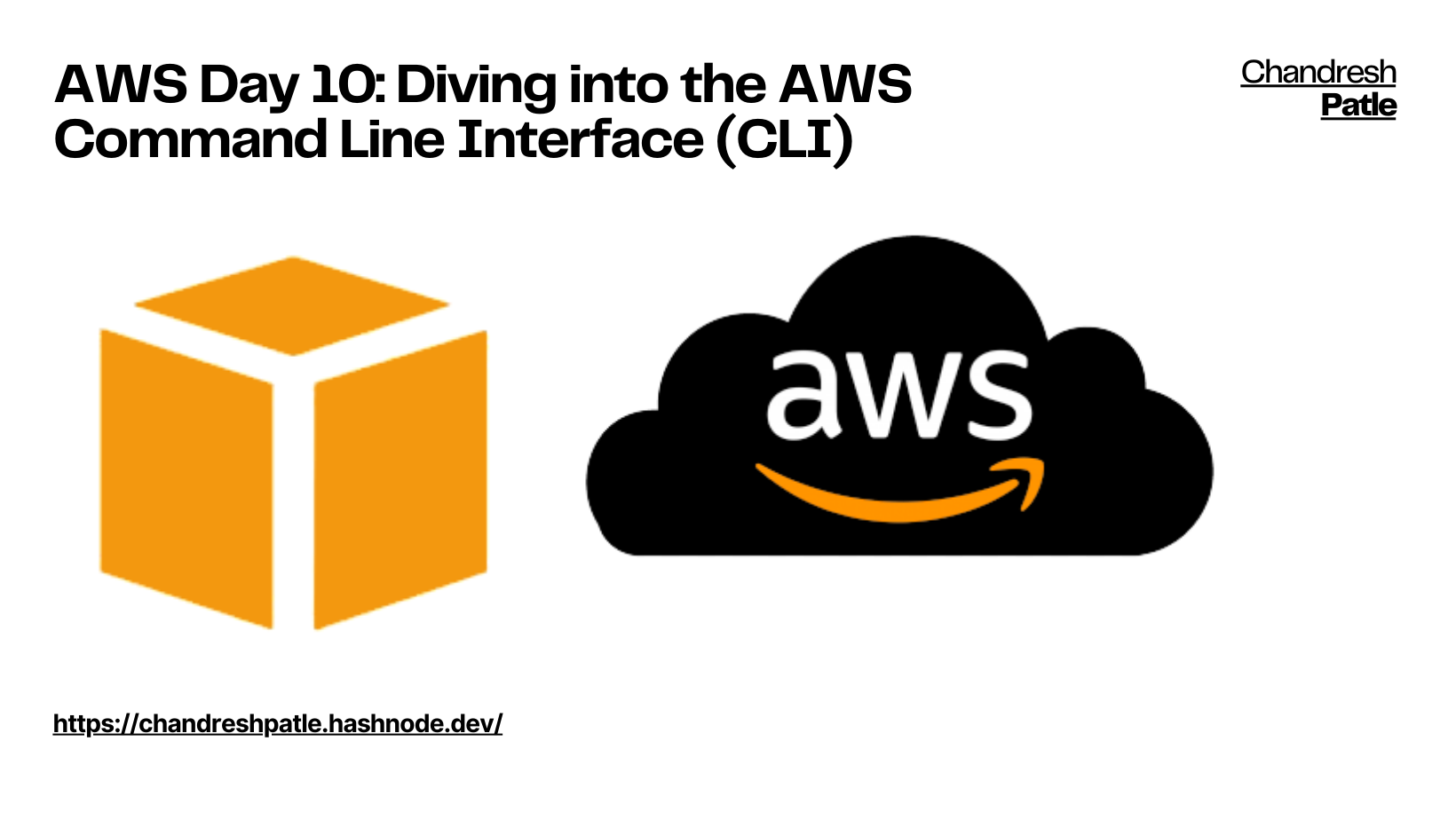AWS Day 10: Diving into the AWS Command Line Interface (CLI)
 CHANDRESH PATLE
CHANDRESH PATLE
Welcome to Day 10 of your AWS journey! Today, we're taking a deep dive into the AWS Command Line Interface (CLI), a powerful tool for managing your AWS resources from the command line. In this blog post, we'll explore what AWS CLI is, how to install it, where to find CLI reference documentation, and practical AWS CLI commands to list S3 buckets and create EC2 instances.
🔶 What is AWS CLI?
AWS CLI is a unified tool provided by Amazon Web Services that allows you to interact with AWS services and manage your cloud resources using text commands. With AWS CLI, you can automate various AWS tasks, create scripts, and efficiently manage your AWS infrastructure.
🔶 How to Install AWS CLI?
Installing AWS CLI is straightforward:
On Windows: You can download the MSI installer from the AWS CLI website.
On macOS: You can use Homebrew or pip to install AWS CLI. For Homebrew, run
brew install awscli. For pip, runpip install awscli.On Linux: Use your distribution's package manager to install AWS CLI. For example, on Ubuntu, you can run
sudo apt-get install awscli.
Once installed, you can configure AWS CLI by running aws configure and providing your AWS access key, secret key, region, and output format.
🔶 CLI Reference Documentation
AWS CLI is well-documented, making it easy to find information and command references:
Official AWS CLI Documentation: The official AWS CLI documentation provides comprehensive information, including command references, installation guides, and examples.
Command-Line Reference: The
aws helpcommand provides help for each AWS CLI command. For instance,aws s3 helpwill give you details about S3 commands.
🔶 AWS S3 List (ls) Command
Listing Amazon S3 buckets and objects is a common AWS CLI task. Here's how you can use the aws s3 ls command:
To list all your S3 buckets:
aws s3 lsTo list objects within a bucket:
aws s3 ls s3://your-bucket-name
🔶 AWS EC2 Create Instance Command
Creating an EC2 instance using AWS CLI is efficient. Here's an example of how to do it:
aws ec2 run-instances --image-id ami-XXXXXXXXXXXXXXXXX --instance-type t2.micro --key-name your-key-pair-name --subnet-id your-subnet-id
Replace ami-XXXXXXXXXXXXXXXXX with the desired Amazon Machine Image (AMI) ID, t2.micro with the instance type, your-key-pair-name with your key pair name, and your-subnet-id with the desired subnet ID.
AWS CLI empowers you to create and manage AWS resources efficiently and programmatically.
In conclusion, AWS CLI is a versatile and powerful tool for managing your AWS resources and automating cloud tasks. As you continue your AWS journey, mastering AWS CLI will prove to be a valuable skill, enhancing your ability to manage and automate your AWS infrastructure.
Stay tuned for more AWS insights, hands-on guides, and best practices as you explore the depths of Amazon Web Services.
Happy scripting and AWS CLI mastery!
🔶 Learning Resources:
Throughout my AWS journey, I've found valuable learning materials to enhance my understanding. One such resource that has been incredibly helpful is the YouTube playlist titled 'AWS Zero to Hero'
As I continue sharing my AWS experiences in this blog series, I encourage you to explore this playlist and stay curious about the ever-evolving world of AWS.
#AWS_Zero_to_Hero Repo: https://github.com/Chandreshpatle28/aws-devops-zero-to-hero.git
Happy Learning!
Stay in the loop with my latest insights and articles on cloud ☁️ and DevOps ♾️ by following me on Hashnode, LinkedIn (https://www.linkedin.com/in/chandreshpatle28/), and GitHub (https://github.com/Chandreshpatle28).
Thank you for reading! Your support means the world to me. Let's keep learning, growing, and making a positive impact in the tech world together.
#Git #Linux Devops #Devopscommunity #90daysofdevopschallenge #python #docker #Jenkins #Kubernetes #Terraform #AWS

Subscribe to my newsletter
Read articles from CHANDRESH PATLE directly inside your inbox. Subscribe to the newsletter, and don't miss out.
Written by